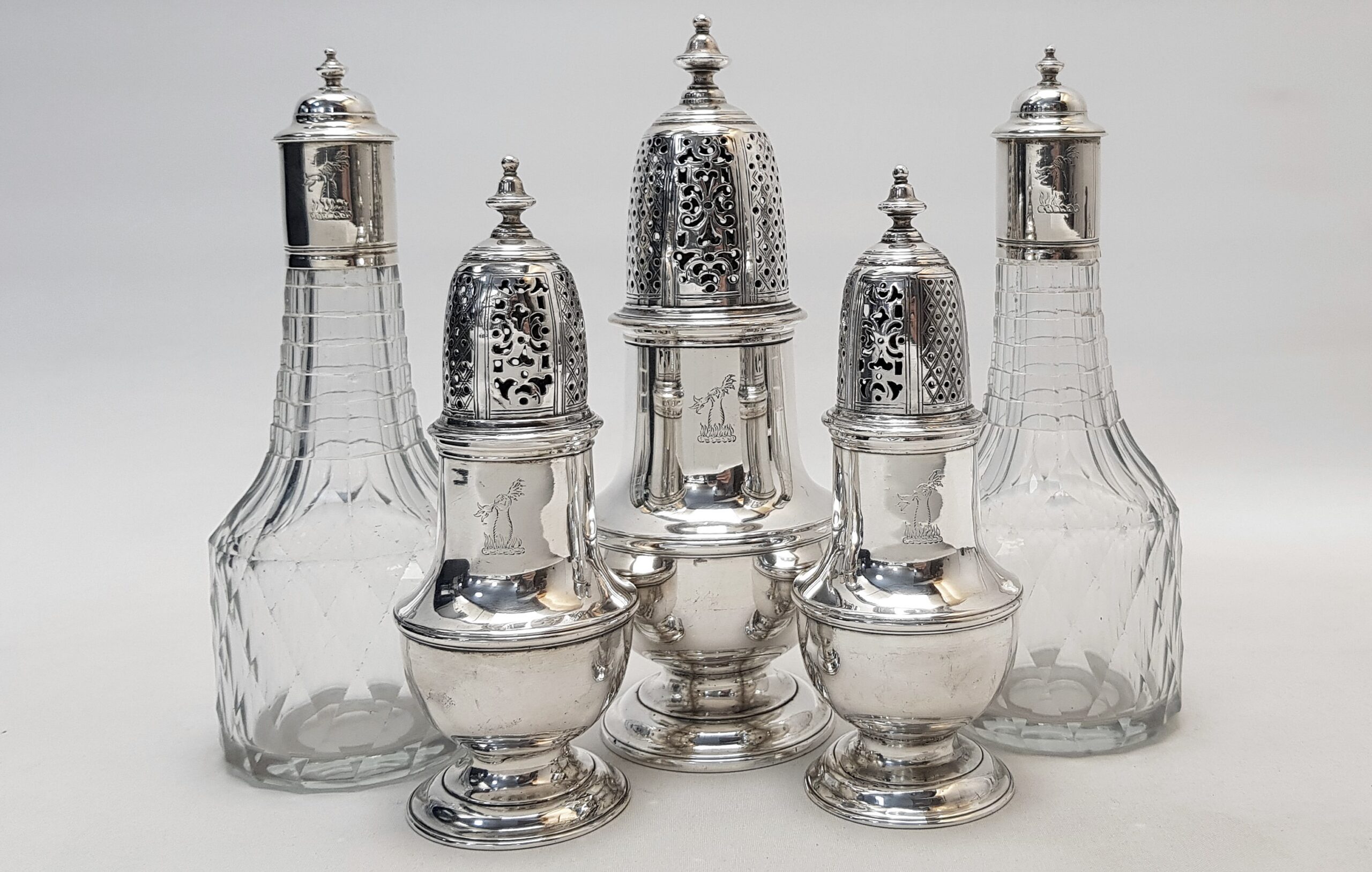Condiments and Cruets
How do you like your food? Sweet and sour? Hot and spicy? Nowadays we think nothing about eating foods from all over the world and we enjoy the ability to add at will a myriad of sauces and spices to condiment the dishes on our table. A far cry from antique times when food was pre-condimented in the kitchen prior to being served at the table and a single master salt was placed in front of the head of the table.
The turn of the 1700’s saw a dramatic change in the way that food and drinking beverages were served in this country. At that time, many of the medieval traditions to do with eating and drinking were being replaced by the fashion for dining “a la francaise”, a style which was swiftly gaining popularity and introduced many new dishes such as soups, stews and terrines. All the dishes for each course were placed simultaneously on the table – guests could help themselves and required less help from servants. This, plus the arrival of new drinking beverages tea, coffee and chocolate, created a demand for many exciting new types of silverware and the silversmiths’ shops were quick to make available the latest vessels and designs. Silver tableware had now become the main source of table decoration.
In order to accommodate large scale formal dining the fashionable tables of the aristocracy would have had a “surtout”, an elaborate table centrepiece fitted with tureens, dishes, cruet stands, maybe even candle branches, whereas the dining tables of the gentry and prosperous middle classes would have featured a multi-purpose condiment stand to hold the glass bottles for oil and vinegar and silver casters for sugar and spices.
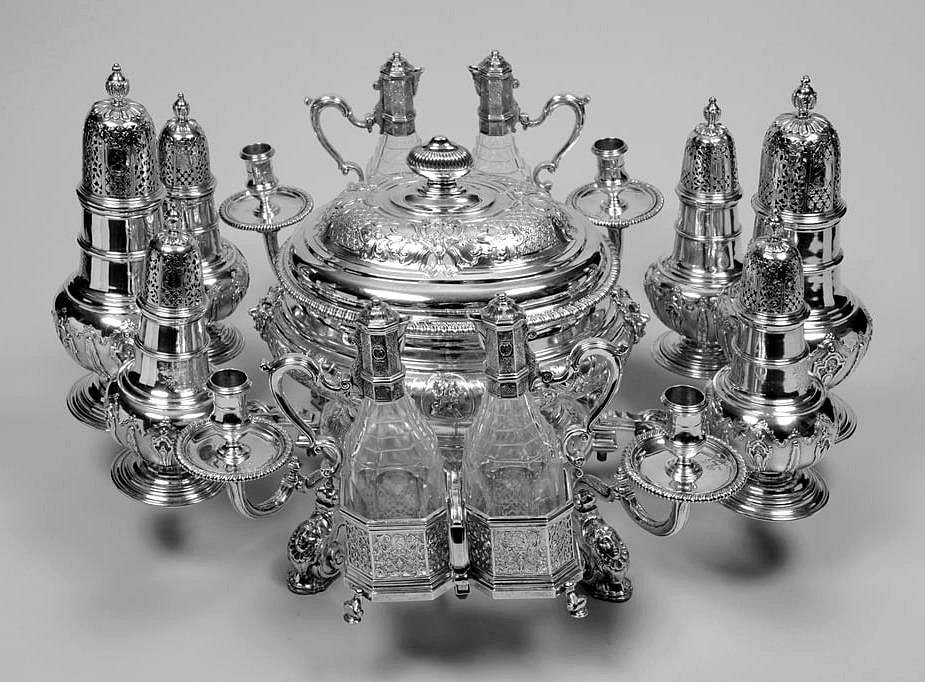

The Kirkleatham Centrepiece, dated 1731-32, by David Willaume & Anne Tanqueray
This magnificent George II silver centrepiece (or surtout compleat) is on display at Temple Newsam House, a historic country house situated in Leeds, West Yorkshire
Single casters for sugar or pepper were made from the 1680’s onwards however the earliest cruet frames are not found before 1700. These usually contained 3 castors and 2 glass bottles and could be passed around the table from guest to guest. This form is generally known as the “Warwick” cruet after the stand created by Anthony Nelme in 1715 for the Duke of Warwick. At this early date the two bottle oil and vinegar frame also existed although this form was more popular on the continent.
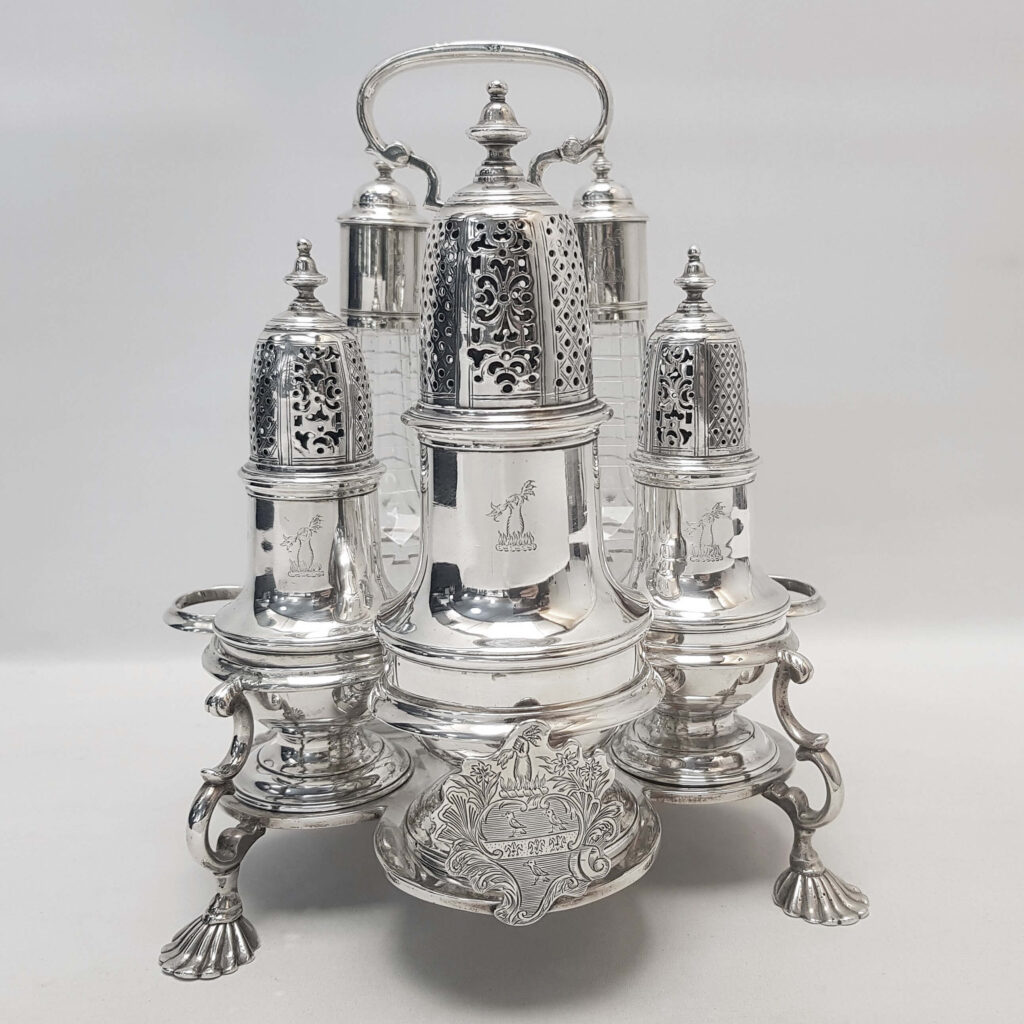

George III Antique Silver Warwick Cruet, dated 1762. Maker John Delmester
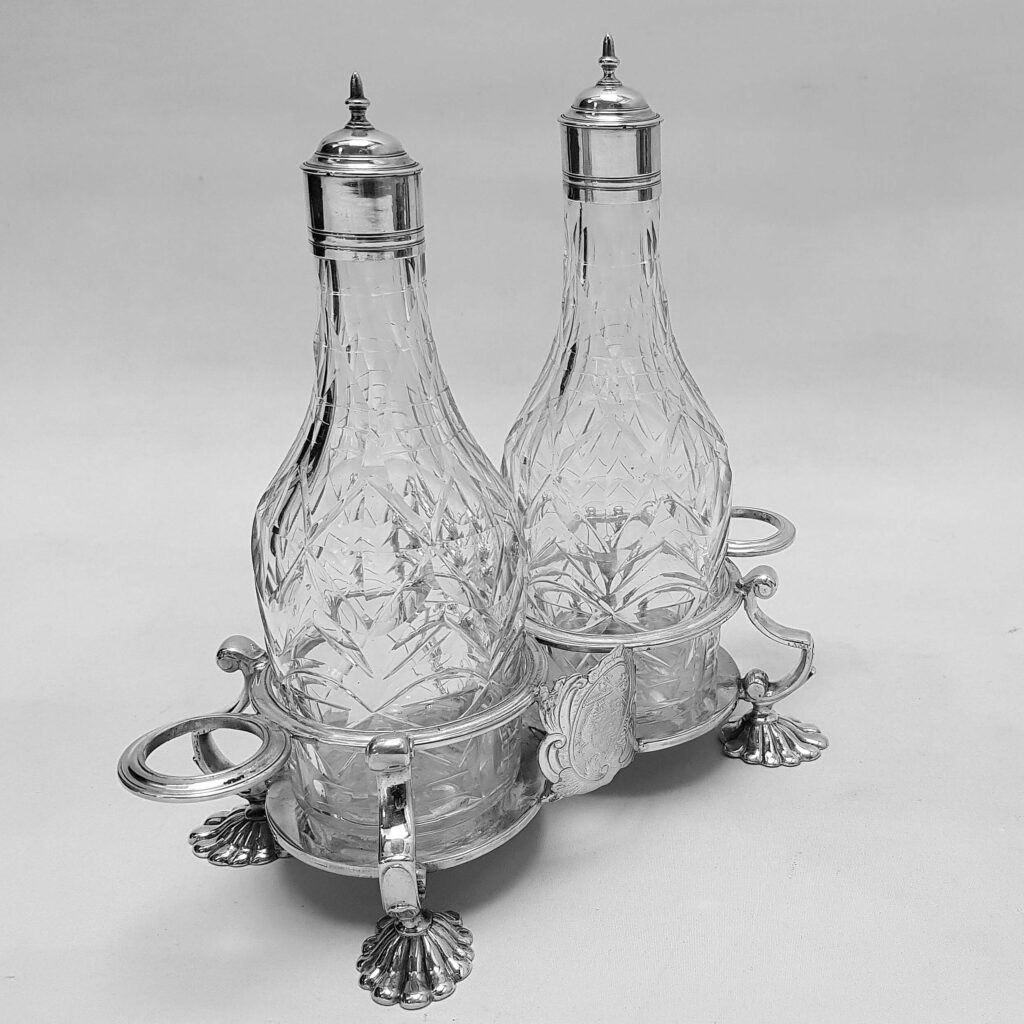

George II Antique Silver Oil and Vinegar Set, dated 1750. Maker Samuel Wood
Later, as the 18th century progressed, the number of bottles could be as many as 8 or 10 which would have contained a variety of sauces of the period such as soy, ketchup, tarragon etc. The bottles may have also had little sauce labels to identify the contents.
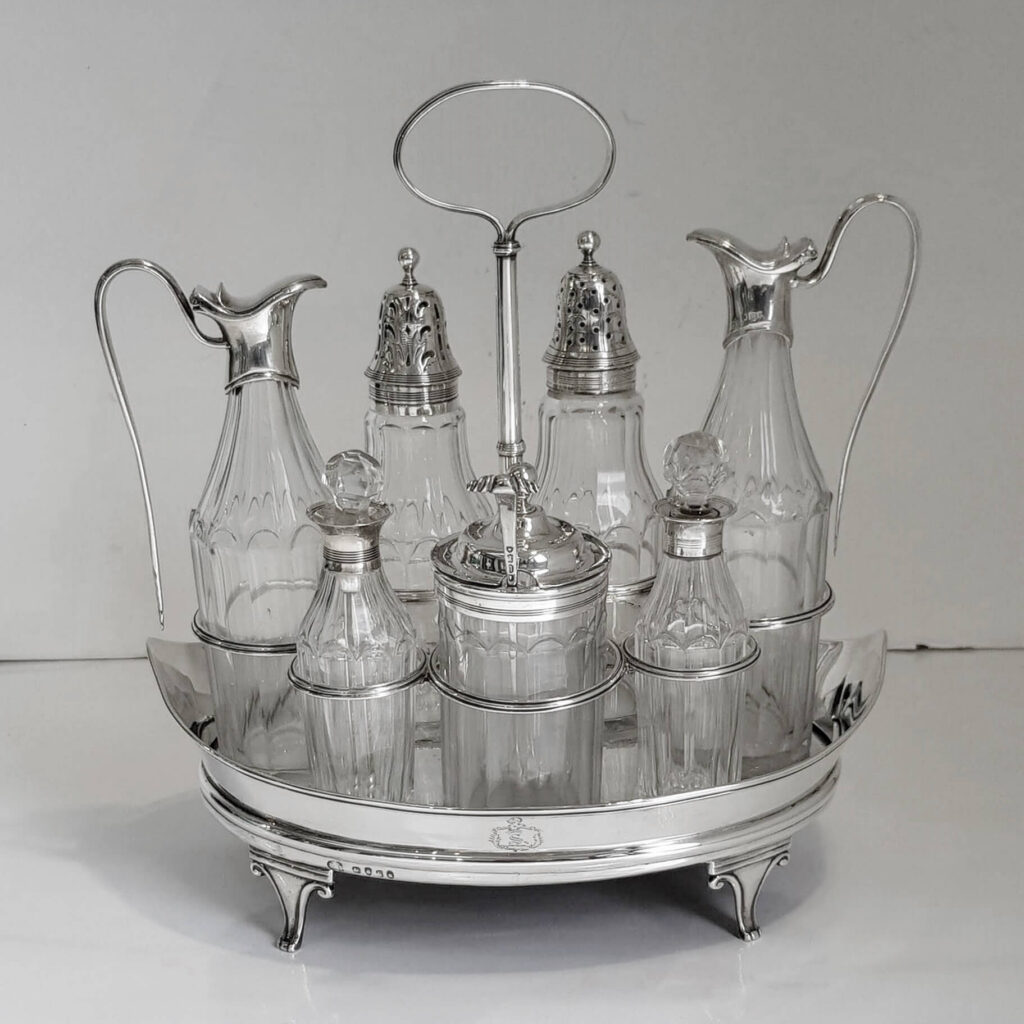

George III Antique Silver Cruet, dated 1792, by Robert Hennell II
